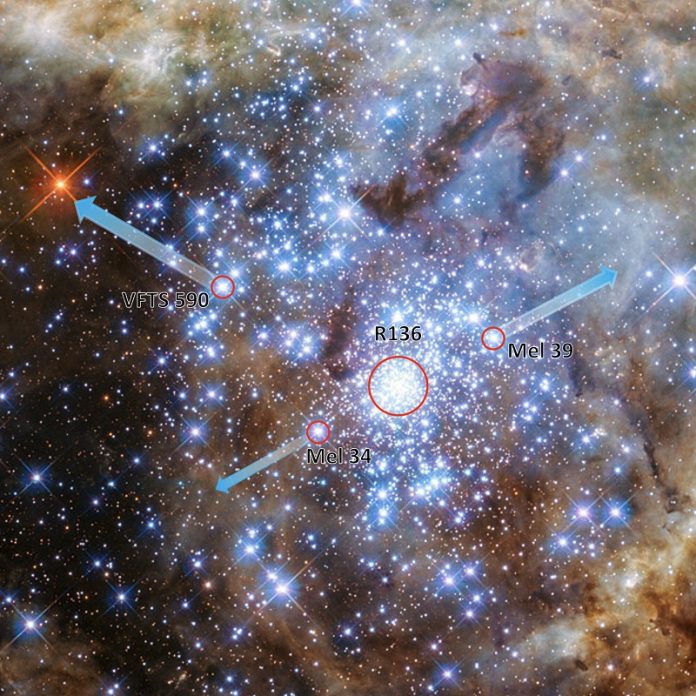
Astronomers have managed to recreate a dramatic cosmic event that happened 60,000 years ago in a giant star cluster called R136, located in the Tarantula Nebula.
Using powerful computer simulations, a team led by Simon Portegies Zwart from the University of Amsterdam has traced how a group of five massive stars collided and scattered, flinging three of them out of the cluster at incredible speeds.
This breakthrough, published in Physical Review Letters, marks the first time scientists have been able to reconstruct such a complex and violent interaction between multiple stars in such detail. Until now, it was believed that such ejections might involve three or four stars.
But this new research shows that five stars were involved in the same explosive event—an unexpected and fascinating twist.
In their simulations, the team focused on three runaway stars: VFTS 590, and two massive binary star systems called Mel 34 and Mel 39.
These stars were previously found speeding away from the center of R136 and appeared to have been launched at roughly the same time. Earlier observations, including data from the European Space Agency’s Gaia space telescope, hinted at this shared origin, but the exact cause remained unclear.
The new study reveals that all five stars were once part of a tightly packed, chaotic group in the heart of R136. In the early stages of a cluster’s life, young stars move in random and unpredictable ways.
When stars come too close to one another, their powerful gravity can cause wild interactions, much like a game of cosmic pinball. In this case, the close encounter between VFTS 590, Mel 34, and Mel 39 caused the entire system to break apart in a single, explosive event.
One of the most surprising discoveries is just how massive these stars are. Mel 39, for example, is made up of two stars with masses of 140 and 80 times that of our Sun.
The simulations show that Mel 39 is now racing away from the cluster at 64 kilometers per second. Mel 34, another heavyweight binary, is also speeding off in the same direction. Both lie in the same orbital plane, strengthening the evidence that they were all part of the same dramatic encounter.
This research offers a rare look into the wild and chaotic early life of a star cluster.
It helps explain how some of the most massive runaway stars we’ve ever observed came to be—and shows that even in the distant cosmos, chaos can lead to discovery.



